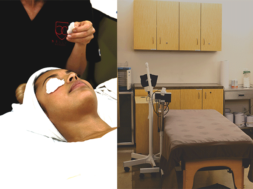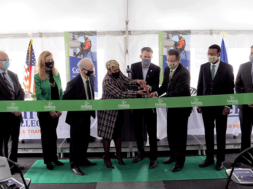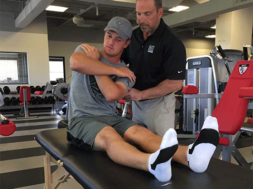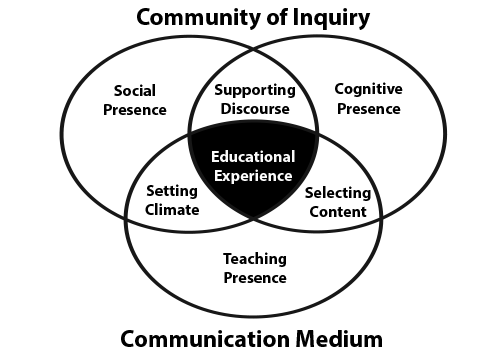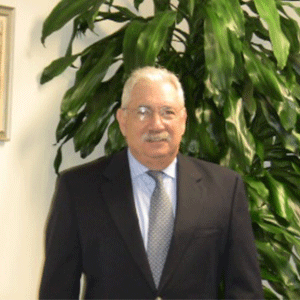
By Steven Roth, Ed.D., Professor, Education and Brian Keintz, Ph.D., Professor, Education, Keiser University Graduate School
Introduction
Ms. Arroyo is a nursing instructor. She has been teaching at a career college for 10 years. She spent 21 years as a nurse prior to her full-time teaching career. Students know that Ms. Arroyo is a skilled and experienced nurse and instructor. Her skills as a teacher are described by students and colleagues as “engaging, challenging, supportive, and thorough.”
These are flattering descriptions of Ms. Arroyo but the qualities most impressive about her are hard to describe in one word. Student evaluations provide a better picture. “Ms. Arroyo understands my unique needs as a student. She talks to me as if she has known me forever,” writes one student. Another student writes that “Ms. Arroyo anticipates my questions and addresses them before I ask her.” Finally, “Ms. Arroyo is genuinely interested in me and my career. She takes time to know her students.”
Ms. Arroyo is fictitious, but all learners can recall a teacher like Ms. Arroyo. Ms. Arroyo is the teacher who goes beyond presenting a lesson and administering an assignment. She or he commands the teaching and learning process. This teacher has “with-it-ness.”
Foundations of with-it-ness
Zen and with-it-ness
With-it-ness is from the framework of “mindfulness” created by Zen Buddhists. Mindfulness means to have a disciplined mind allowing for deepening insight. The word, mindfulness, is from the Pali word “sati,” which, in the Buddhist tradition, implies awareness, attention, and alertness (Wilson, 2014). However, mindfulness is more than deep thought. It is an extremely clear and laser focused attention.
Mindfulness is the skill of concentration that affords the ability to achieve mental clarity and the capability of “squeezing out” distractions (Gabrysa and Daizan, 2012).
The concept of with-it-ness is the teacher’s awareness of what is occurring in the classroom without witnessing the actions taking place (Kounin, 1977).
Characteristics of a teacher’s with-it-ness
How can a teacher achieve with-it-ness in the classroom including the ability to manage, control and set the tone for a positive learning setting? Practicing with-it-ness in teaching requires applying certain strategies. 1) Teachers should have a thorough knowledge of each student on a personal basis by knowing names, interests, strengths and weaknesses. 2) Teachers may use non-verbal techniques so that students know the teacher is aware of classroom activities. 3) Teachers should also make appropriate and timely comments regarding proper behavior and study habits. 4) Expectations of behavior and learning outcomes are clearly communicated. 5) A positive physical positioning in and around the classroom is necessary to demonstrate awareness, authority and organization.
Teacher radar
The capacity of being totally aware of student activity is also described as “teacher radar.” The ability to manage and motivate students is essential to effective teaching practices. Monitoring students and immediately responding to minor behavior issues and distractions while providing feedback and instructions is the basis of “teacher radar.” An example of “teacher radar is “Ms. Arroyo” writing at the white board with her back to the class, but can instinctively perceive distractions in the classroom which makes her turn around and address the issue. This causes the students to say that Ms. Arroyo has “eyes in the back of her head!” This principle works within any classroom management system enhancing a positive learning environment (Owens, 2006).
With-it-ness assessment
With-it-ness is not a skill that a teacher is born with. It must be developed through experience and practice. There are assessment strategies that support the classroom teacher in obtaining the ability to achieve with-it-ness. One of these assessment strategies is breaking down videos of classroom observations. This results in the review of a teacher’s actions so best practices may be adjusted to improve classroom management using concepts of with-it-ness (Snoeyink, 2010). The benefit is that the teacher sees him or herself from the student perspective and reduces annoying mannerisms, improves classroom management, becomes aware of student understanding, and raises awareness of their “reflection in action” (Snoeyink, p. 1).
The use of two cameras is valuable as one can be focused on the front of the classroom and the other on the students.
The teacher can view the student’s reactions as the teacher adjusted mannerisms and movement around the classroom. Viewing the video can help the teacher reflect upon his or her emotional impartiality in order to create awareness of how to react in future classes. With-it-ness and emotional impartiality require an “appropriate mental set” (Marzano et al, 2003, p. 75) that teachers can improve with time and practice. This mindset is developed with years of experience of awareness of student issues, empathy and caring about the students in their classroom.
With-it-ness and teaching effectiveness
With-it-ness and teaching effectiveness are linked. Knowledge of this connection provides a framework for with-it-ness practice and for evaluation of teaching. The Community Model of Inquiry sums up the relationship. The model consists of three elements. They include cognitive, teaching and social presence (Garrison, 2007).
(Garrison, 2007, p. 62)
Cognitive presence
Teachers focus on cognitive presence by delivering a lesson plan with a defined learning outcome. Teachers with cognitive presence are focused on cognitive exploration, construction, resolution and confirmation of learning. Teachers with cognitive presence provide leadership for learner integration and application to practice. Cognitive presence means that the learner learns content, can apply it, and reflect upon the integration of knowledge (Gorsky & Blau, 2009).
Cognitive presence is demonstrated in a lesson where a triggering event initiates the learning process. The learner, as a result of this triggering event, will explore content, seek ways of integrating new knowledge with existing knowledge, and resolve to apply this knowledge in future situations (resolution). High expectations, continuous challenges, reflection on learning, and assessment/feedback are constant (Gorsky & Blau, 2009).
Teaching presence
Teaching presence is the process of planning, facilitating, and directing cognitive and social processes (Anderson, et al, 2001). It is also about a process of removal of previously learned and deeply embedded obstacles to learning that prevent authenticity.
Teaching presence is promoted most by teacher modeling. Teachers provide leadership for building a learning community by demonstrating a passion for content, practice, and continuous improvement. Teachers with teacher presence are visible and engaged with learners. They establish a culture of learning by promoting clear guidelines, setting high expectations, offering support, and organizing systems of evaluation and feedback. Communication technology connects the teacher to the learner (Boettcher & Conrad, 2010).
Social presence
Teachers who have the capacity to establish personal and purposeful relationships have a social presence. Social presence is a skill that provides the foundation for cognitive and teaching presence. Social presence relies on three competencies including effective communication, open communication, and group cohesion. Each of these competencies must be experienced collectively by the learning community.
Teachers who have social presence show genuine interest in learners.
An example of social presence is introductions by students during the first day of class. Each student and the instructor participate in the introductions.
This activity builds a scholarly community that is respectful, goal-oriented, and empathetic. Practices like this should be continued in each future class expanding the feeling of trust and promoting openness. An environment where learners feel comfortable asking questions and sharing opinions is the product of social presence. Peer-to-peer and student-to-instructor communications flow back and forth through practical learning activities and meaningful discussions. Integration of communication technology (social media) is standard practice (Boettcher & Conrad, 2010).
Conclusion
Every learner has had a Ms. Arroyo – a teacher who has with-it-ness. This teacher has a “presence” in the classroom. Their teacher radar is fully engaged as the teacher anticipates the learners’ needs and engages learning in an environment of trust and community. With-it-ness can be observed in classrooms of teaching veterans, like Ms. Arroyo, but it also is experienced through the direction of any competent and respectful instructional leader.
References
Anderson, T., Rourke, L., Garrison, D.R. & Archer, W. (2001). Assessing teaching presence in a computer conferencing context. Journal of Asynchronous Learning Networks, 5(2), 1-17.
Boetcher, J.V. & Conrad, R.M. (2010). The online survival teaching guide: Simple and practical pedagogical tips. San Francisco, CA: Jossey Bass.
Garrison, D.R. (2007). Online community of inquiry review: Social, cognitive and teaching presence issues. Journal of Asynchronous Learning Networks, 11(1) 61-72
Gabrysa, B.J. & Daisan Skinnerb, J. (2012). Zen meditation and mindfulness for modern times. Department of Materials, University of Oxford. Proceedings of the Alternative Natural Philosophy Association (ANPA) 32 (2011), Ed. A. Ford, 2012
Gorsky, P. & Blau, I. (2009). Online teaching effectiveness: A tale of two instructors. The International Review of Research in Open and Distributed Learning 10(3). Retrieved from http://www.irrodl.org/index.php/irrodl/article/view/712/1270.
Kounin, J. (1977) Discipline and group management in classrooms. New York: Hold Rinehard and With-it-nessston.
Marzano, R.J., Marzano, J.S. & Pickering, D.J. (2003). Classroom management that works: Research-based strategies for every teacher. Alexandria, FA: Association for Supervision and Curriculum Development.
Owens, L. (2006). Teacher radar: The view from the front of the class. Journal of Physical Education, Recreation & Dance (JOPERD), v77 n4 p29-33 Apr 2006
Snoeyink, R. (2010). Using video self-analysis to improve the “withitness” of student teachers. Journal of Digital Learning in Teacher Education. 26(3). Retrieved from https://files.eric.ed.gov/fulltext/EJ881732.pdf
Wilson, J. (2014). Mindful America: Meditation and the mutual transformation of Buddhism and American Culture. Oxford University Press.
STEVEN ROTH, Ed.D. is a professional educator with more than 30 years of experience in public, private and international education. He has held leadership roles as a K-12 teacher and principal, college professor, career college director, executive director of post-secondary programs for students with special needs and director of studies in a public high school in Wuxi, China (PRC). He also served as director of college counseling/placement organizations and language schools director in Latin America for numerous years. Currently, Dr. Roth is a graduate professor at Keiser University in Ft. Lauderdale, Florida. He holds a Bachelor of Arts degree in history from Brooklyn College, a Master of Arts degree in Latin American studies from New York University, a Master of Science degree in Special Education from Grand Canyon University as well as a Doctor of Education degree in Educational Leadership from Nova Southeastern University. His most recent presentations have focused on multicultural education, methods to increase academic achievement, teacher professional development, and retention in online classes.
Contact Information: Steven Roth, EdD // Graduate Professor of Education, Coordinator of the Masters Programs in Education // Keiser University // 754-422-8998 // sroth@keiseruniversity.edu // www.keiseruniversity.edu // Linkedin
BRIAN KEINTZ, Ph.D., is a graduate professor and Chair of Graduate Programs in Education at Keiser University. He has been at Keiser University for nine years. He has 28 years of work experience in higher education including five previous state institutions. Dr. Keintz was Director of the Student Union at Florida Atlantic University from 2005-2010, where he was also an adjunct instructor for the Department of Educational Leadership. He was responsible for all operations of the FAU Student Union, Kaye Auditorium, and Student Activities. He was the Associate Director of the Arizona Student Unions at the University of Arizona (U of A), where he worked from 1999-2005. Dr. Keintz has a Ph.D. in Adult Education and Technology from the University of Wyoming. He also has an M.Ed. in Student Personnel Administration and a B.S. in Ag Education. His teaching expertise is in the areas of educational leadership, adult learning and development, budget and finance, assessment, and research.
Contact Information: Brian Keintz, Ph.D. // Chair of Graduate Programs in Education, Professor // Keiser University // 954-825-6879 // bkeintz@keiseruniversity.edu // www.keiseruniversity.edu // Twitter @BrianKeintz

